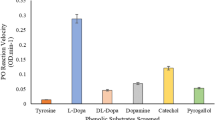Abstract
A saxitoxin (STX)-binding factor has been found in the haemolymph of the xanthid crabs Lophozozymus pictor, Liomeratristis, Chlorodiella nigra and Actaeodes tomentosus. Lophozozymus pictor and A. tomentosus are both xanthids previously known to be toxic, with the toxins in some L. pictor individuals having been identified as STX analogues. All the individual crabs which had this STX-binding factor did not have any STX-like activity in their haemolymph or tissues. In contrast, no such factor could be found in two other reportedly toxic xanthids, Atergatis floridus and Platypodia granulosa, each individual of which did contain STX-like bioactivity. Analysis of saturable 3H-STX-binding, binding kinetics and competition curves in the haemolymph of both Lophozozymus pictor and Liomera tristis indicated that a single, pharmacologically homogeneous population of STX-binding sites was present in each species. The analysis also revealed that the haemolymph from the non-toxic xanthid Liomera tristis had an affinity for STX of 0.12 nM, which was 20-fold greater than that from Lophozozymus pictor (2 nM). This tighter toxin-binding by Liomera tristis haemolymph predominantly results from a much slower rate of toxin dissociation. The protease trypsin inactivated the toxin-binding factor in both Lophozozymus pictor and Liomera tristis haemolymph. Tetrodotoxin (TTX) could not displace 3H-STX from any of the haemolymph samples, distinguishing this factor from the voltage-gated sodium channel and a TTX-neutralizing haemolymph protein previously found in a grapsid crab and a horseshoe crab. Analogues of STX, which may occur in marine organisms, possess markedly reduced abilities to displace 3H-STX from haemolymph samples. Toxin-binding was inhibited by acidic pH, producing titrations with pKs of 5.5 and 5.1 for Lophozozymus pictor and Liomera tristis haemolymph, respectively. Binding characteristics are reminiscent of a recently found amphibian plasma protein which belongs to the transferrin family of proteins and is unrelated to the voltage-gated sodium channel, the only previously known STX-binding protein. This is the second putative STX-resistance mechanism to be found in this family of crabs.
Similar content being viewed by others
Author information
Authors and Affiliations
Additional information
Received: 19 November 1996 / Accepted: 9 January 1997
Rights and permissions
About this article
Cite this article
Llewellyn, L. Haemolymph protein in xanthid crabs: its selective binding of saxitoxin and possible role in toxin bioaccumulation. Marine Biology 128, 599–606 (1997). https://doi.org/10.1007/s002270050126
Issue Date:
DOI: https://doi.org/10.1007/s002270050126




